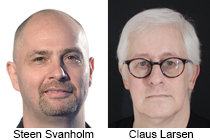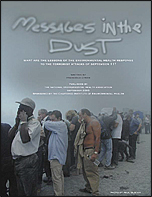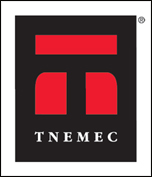Using 911facts.dk

How do you get the most out of this site?
Truth Movement
Publications
Booking

We are available for booking a lecture or a workshop here.

Other technical studies
- American Society of Civil Engineers
- Environmental Health Perspectives
- Lawrence Berkeley National Laboratory
- Mailman School of Public Health, Columbia University
- Massachusetts Institute of Technology (MIT)
- MCEER
- Merritt & Harris
- Mesothelioma Center
- MVA Scientific Consultants
- National Environmental Health Association
- Occupational Safety and Health Administration
- R.J. Lee Group / Deutsche Bank
- Tnemec
- USGS – United States Geological Survey
- The Washington Post
American Society of Civil Engineers
|
ASCE, The Pentagon Building Performance Report After the terror attacks, the American Society of Civil Engineers investigated the damaged Pentagon building, suggesting ways to improve the structure. |

|
| Download PDF |
Environmental Health Perspectives
| A monthly peer-reviewed journal, with research and news, published with the support of The National Institute of Environmental Health Sciences, National Institutes of Health, U.S. Department of Health and Human Services. |

|
|
Health and Environmental Consequences of the World Trade Center Disaster, Philip J. Landrigan, Paul J. Lioy, George Thurston, Gertrud Berkowitz, L. C. Chen, Steven N. Chillrud, Stephen H. Gavett, Panos G. Georggopoulos, Alison S. Geyh, Stephen Levin, Frederica Perera, Stephen M. Rappaport, Christopher Small, and the NIEHS World Trade Center Working Group Environmental Health Perspectives, Vol. 112, No. 6, May 2004 World Trade Center fine particulate matter–chemistry and toxic respiratory effects: an overview., Chemical analysis of World Trade Center fine particulate matter for use in toxicologic assessment, |
|
Lawrence Berkeley National Laboratory
|
Elevated tritium levels at the World Trade Center Lawrence Berkeley National Laboratory found traces of tritiated water (HTO) at the World Trade Center Ground Zero after the 9/11/01 terrorist attack. All these results are well below the levels of concern to human exposure. |

|
Mailman School of Public Health, Columbia University
| World Trade Center Environmental Contaminant Database, (WTCECD) |

|
Tests included:
|
|
Massachusetts Institute of Technology (MIT)
|
The Towers Lost and Beyond Essays on WTC, from the Massachusetts Institute of Technology (MIT), Eduardo Kausel (ed.) |

|
|
Get the full report here PDF (9962KB).
|
MCEER
|
MCEER is an American organization, supported by e.g. the National Science Foundation and the Federal Emergency Management Agency (FEMA). MCEER investigates the effects of earthquakes and other catastrophes.
After the terror attacks, MCEER investigated the damaged buildings at Ground Zero, and published several reports. |

|
Merritt & Harris
Mesothelioma Center
MVA Scientific Consultants
|
Progress Report on the Analysis of Red/Gray Chips in WTC Dust, Revised Report of Results: MVA9119, James R. Millette
James Millette, MVA Scientific Consultants, has conducted an independent study of dust samples from the World Trade Center, in an effort to replicate the experiments by Harrit et al. Millette concludes that there is no thermitic material in the dust. |

|
| Download PDF |
National Environmental Health Association
| National Environmental Health Association is an organization working for better work environment. In 2003, they published this report about the health consequences of the impacted areas on Manhattan and in the vicinity of the Pentagon. |

|
| Download PDF |
Occupational Safety and Health Administration
| The mission of the Occupational Safety and Health Administration is to assure safe and healthy working conditions for working men and women. In 2003, the administration published this report about the possible dangers for the rescue teams during the impacted areas on Manhattan. |

|
| Download PDF |
R.J. Lee Group / Deutsche Bank
|
Damage Assessment 130 Liberty Street Property Report Date: December 2003 WTC Dust Signature Report Composition and Morphology Environmental study of dust from 130 Liberty Street, a.k.a. “Deutsche Bank” and “Bankers Trust Plaza”. The building was situated South of the World Trade Center 2. |

|
| Download PDF |
|
Signature Assessment 130 Liberty Street Property Report Date: May 2004 Expert Report WTC Dust Signature A more detailed environmental study of the dust from 130 Liberty Street, a.k.a. “Deutsche Bank” and “Bankers Trust Plaza”. The building was situated South of the World Trade Center 2. |

|
| Download PDF |
Tnemec
|
Material Safety Data Sheet MSDS) Chemical composition of the primer (paint) used to protect the steel used during the construction of the World Trade Center 1 and 2. |

|
| Download PDF |
USGS – United States Geological Survey
| Environmental studies of the World Trade Center after the terror attacks on September 11th 2001. |

|
Additional studies
|
|
The Washington Post
|
Database of the victims, The Washington Post The Washington Post collated a database of the names of the victims of the terror attacks on September 11 2001. |

|


